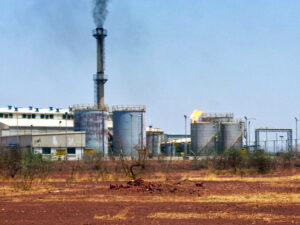North Darfur farmers warned of predicted summer locust scourge
The Ministry of Agriculture, Forestry, and Livestock in North Darfur has warned that widespread locust swarms are expected with the onset of the upcoming rainy season, which may cause such damage to crops as to endanger the entire summer agricultural season in the state.
 A swarm of locusts (File photo)
A swarm of locusts (File photo)
The Ministry of Agriculture, Forestry, and Livestock in North Darfur has warned that widespread locust swarms are expected with the onset of the upcoming rainy season, which may cause such damage to crops as to endanger the entire summer agricultural season in the state.
In a statement to Sudan News Agency, the agricultural engineer, Salha Salim Naji, a plant protection specialist at the state’s Ministry of Agriculture, called on the competent authorities in the federal and state governments to start taking the necessary measures and measures for immediate intervention to combat the pest with the beginning of the rainy season, where the breeding explosion will begin in the so-called ‘out break’. Engineer “Saliha” attributed the expected widespread spread of locusts “Sari al-Layl” during the upcoming rainy season to the heavy spread of locust swarms these days after sunset in the localities of El Taweisha, Dar El Salaam El Lait, the neighbour of the Prophet and Kalmendo, in addition to its spread in a number of other localities in the state, where The pest of Heglig and Sidr trees and some citrus and fruit trees take alternative hosts, in addition to the spread of other swarms of locusts in various localities, such as the grave locusts, which are known locally as Umm Samandu, Umm Bling and Umm Jerkom.
Salha added that the spread of locusts at night in the aforementioned localities these days is due to the fact that these localities represent an extension of the gum arabic belt, which is produced from the hashab tree, which in turn represents the main breadwinner for locusts, in addition to other factors that helped in the spread, including the lack of rain last year that resulted The lack of flow of valleys during the season, in addition to the slow control operations and weather fluctuations, as these factors helped the locust spread with that intensity.
Engineer Salha stressed the importance of confronting the negative effects of the locust outbreak in the state at this time of the year, which she said will lead to stopping the growth of trees and limiting their growth, which means the failure of fruiting operations and a reduction in production in all the trees that attack them.
She also stressed the importance of preparing to deal with potential major risks during the autumn period, when locusts will breed heavily and spread to attack various crops, leading to drought and low production.
Locust threat
In Sudan young grasshoppers and adults form groups in those areas that remain green after the summer rains. A swarm of locusts covering a square kilometer can eat between 80 and 160 tons of crops a day, the UN’s Food and Agriculture Organisation (FAO) calculates. An adult desert locust can eat its own weight of about 2 grammes daily.











 and then
and then